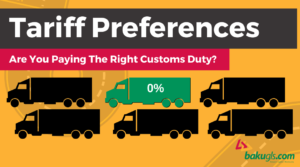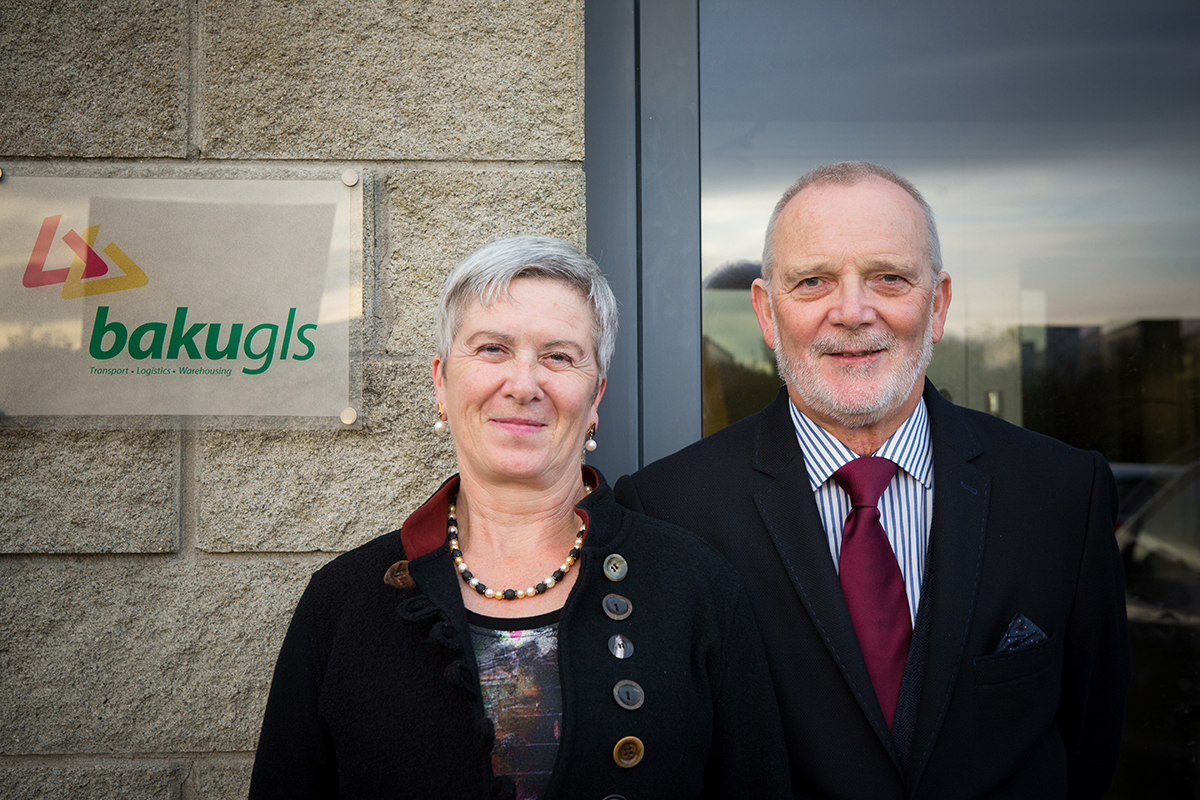
What are preferential tariffs, do they apply to your business and if so, how much money can you save?
In this guide we’ll explain the basics of preferential tariff schemes: what they are, how they work and where to look if you think you might qualify. We’ll also show you why accurate paperwork and forward planning is so important if you want to avail of preferential rates.
What Are Tariff Preferences?
Tariff preferences are special customs rates that allow certain goods to come into a country on a ‘better deal’ than other goods from other countries. These preferences are usually agreed between two countries as part of a larger trade deal.
Using tariff preference schemes, importers can source goods from certain countries at a really good price, and exporters can improve their chances of selling into new markets.
Tariff Preference Schemes come in two main forms:
Tariff Suspensions:
With tariff suspensions, traders pay either a reduced rate of tax & duty on goods (also known as a ‘partial waiver’), or a nil rate (0%), also known as a ‘full suspension’. There are hundreds of tariff suspensions, depending on what you’re importing/exporting and which countries you’re trading with. All of the Tariff Suspensions that apply to Irish businesses are listed by category in the EU’s Tariff Code lookup (TARIC).
Tariff Quotas:
With a tariff quota, a limited volume of goods can be brought into a country before full taxes and duties start to apply. Businesses usually have to apply for a share of their country’s import quota on an annual basis. If granted, they can then use this quota as a sort of ‘allowance’ throughout the year. It’s important to learn all you can about quotas as they’re not applied to your goods automatically — you have to apply for them in advance.
Why Do Preferential Rates Exist?
Every preferential tariff rate ‘tips the scales’ between nations and costs the exchequer valuable income, so governments only allow these rates to exist where the benefits outweigh the costs. If a country is trying to bring balance to its own supply chain, protect its own manufacturing industries or support less fortunate nations, preferential tariffs can help with this.
Supply Chain Protection:
If a country can’t produce a certain type of product or raw material on its own, then that item will have to be imported from overseas. The country might set up an ‘erga omnes’ tariff quota so that importers can bring in just enough of that specific type of product to support the country’s supply chain.
Industry Protection:
If a country’s population is particularly good at making one type of product (electronics, for example), then their government should find ways to make it easy to export that product all over the world. One way to do this is by doing a tariff suspension deal with another country, so that goods can be sold into that country at a globally-competitive price.
Support Developing Nations:
One of the ways that an advanced country can support a developing country is by buying goods from them and helping them build up a strong economy. Some tariff preference schemes are designed for this exact purpose: by waiving VAT and duty, small developing nations can sell their goods into larger, more established economies on better terms than other countries can.
Preferential tariffs aren’t always the best way to protect an industry or support a developing economy. The World Trade Organisation, which covers about 98% of the world’s trade (source), has a template of standard customs rates for global trade, and sometimes these rates are already very good. Preferential tariffs also only apply to third countries (in other words, countries outside the EU). All the same, if you’re an Irish business trying to expand globally, it’s worth getting to know what preferential tariffs are out there. It costs nothing to investigate, and you might discover a way to boost profits and grow sales.
What Affects The Preferential Rates I might qualify for?
The whole preferences system can seem incredibly complicated at first. Tariff preferences change depending on who is buying, who is selling, what is being sold and in what quantities. Rates between nations change depending on which way goods are flowing, how many goods are crossing the border and where those goods originate. Some tariffs don’t last forever either; quotas that may have existed for years can disappear almost overnight with little or no warning.
The TARIC system is the best place to get specific information about the preferences that exist for the goods you’re selling. The most common preference systems to be aware of are listed below. In each case, preferential rates will depend on the goods you’re buying/selling, the origin of those goods and the location of the buyer & seller:
Generalised System of Preferences (GSP):
The GSP (Generalised System of Preferences) scheme was created over 50 years ago to help developing countries sell goods to major markets (including the EU). Under GSP rules, 74 nations (including Uganda, Yemen and Uzbekistan) can export goods to 14 different ‘developed’ markets (including the EU, Canada, the USA and Australia). You can see the current GSP List of Beneficiaries on the UN website here.
Erga Omnes Tariff Preferences:
Erga Omnes, or ‘towards all’, usually applies globally. If an Erga Omnes preferential tariff scheme exists, what that usually means is that Irish businesses can import goods from any international business at a reduced rate. Erga Omnes is fine in theory, but in practice, there may be sanctions in place against certain countries, so it’s important to always check the TARIC database before agreeing to an order.
EU Customs Union Agreements
The EU has trade agreements in place with large economies like Canada and Japan. Preferences covered by these agreements usually fall under the catchy title of “Customs Duties under the provisions of customs union agreements concluded by the European Union”. Each international agreement is usually a vast document that explains the precise conditions under which certain goods might be zero-rated. For Irish businesses, the best thing to do is just look at the TARIC and then get professional customs help if you’re still unsure.
Special Fiscal Territories
There are some situations that Irish businesses need to be aware of when dealing with independent territories and small states within the continent of Europe. For instance, Monaco is its own sovereign nation, but it is treated as a part of France when it comes to customs, VAT and excise duties. San Marino is treated as part of Italy when it comes to customs and excise, but it operates its own VAT system. If you’re moving goods into Gibraltar, Andorra or Vatican City, you should also check the TARIC, as there may be duty, VAT and/or excise duties to pay. Chances are, if you’re buying from any of these smaller states, you’ll at least have to pay import VAT (source).
How To Qualify For Preferential Rates:
As a rule, the goods you’re buying or selling need to meet 3 key criteria:
- They need to meet the Rules of Origin requirements for that specific tariff scheme
- They need to move directly from the export market to the import market
- They need documentary evidence, e.g. an EUR1 origin certificate or an ATR certificate (Turkey).
If you’re trying to benefit from tariff suspensions, as long as you (or your customs agent) complete all of your customs paperwork correctly and on time, the preference should apply automatically.
For tariff quotas, you might need to wait a few months to apply for a share of the quota (if it’s distributed on an annual basis). You might also need to supply additional paperwork to support your quota application, so it’s best to get ahead of this and prepare your application in advance.
There are no grey areas in customs. Goods either qualify for preferential rates or they don’t, and any miscategorisation or paperwork errors can result in serious penalties. You can’t ‘play the system’ with customs … but you can choose which countries you buy from and sell to.
If you’re an importer and you want to use preferential rates to reduce your tariff burden, the only way to do this is to shop around and pick an international supplier that can sell to you on preferential terms. Similarly, if you’re trying to build up the export side of your business, then it might be a good idea to target businesses in countries that share preferential tariff terms with Ireland.
Just remember that tariff preferences are just one part of the puzzle. A preferential tariff might make you think you could save some money by switching suppliers or focusing on a new market, but these cost savings could be swallowed up by increased shipping costs or quality issues further down the line, so you have to be careful. If you still need advice on how to use tariff preferences to grow your business, get in touch with us. We work with hundreds of customers all over the world, and we can help you understand the real costs and savings to be made in this area. We’re always happy to help our customers grow!
Where to check for Tariff Preference Schemes:
The EU’s TARIC system is the best place to start. TARIC is an online tool that helps you check whether your goods might qualify for preferential tariffs (and what those preferences might be). TARIC has all of the countries on preferential customs rates pre-programmed into the system — you just need to know the tariff code of your goods (see our tariff codes page).
The Revenue.ie website has a guide that explains the tariff preference situation between the EU and the UK, which is worth a read if you have time. It’s about five pages long and it gives a good overview of the options for Irish businesses (see the PDF here). It might also be worth keeping an eye on their ‘Classification’ advice page for future updates.
As always, if you need any advice, we’re here to help, too. At Baku GLS, we have built up an expert customs advice team over the past few years. We hold AEO (Authorised Economic Operator) status and can support you with any customs clearance support and customs advice that you might need. Just give us a call or fill in our contact team and we’ll tell you more.
Thanks for reading!














